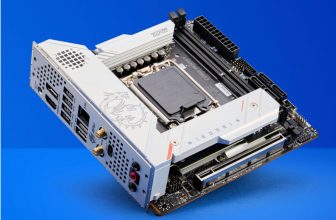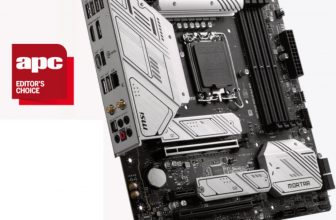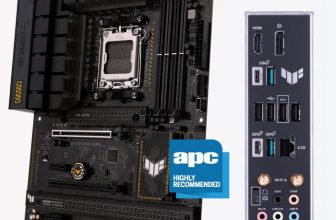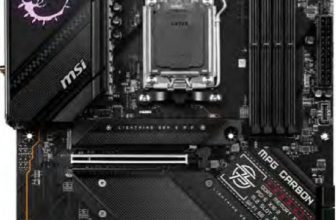ASUS ROG STRIX Z690-I GAMING WIFI Review
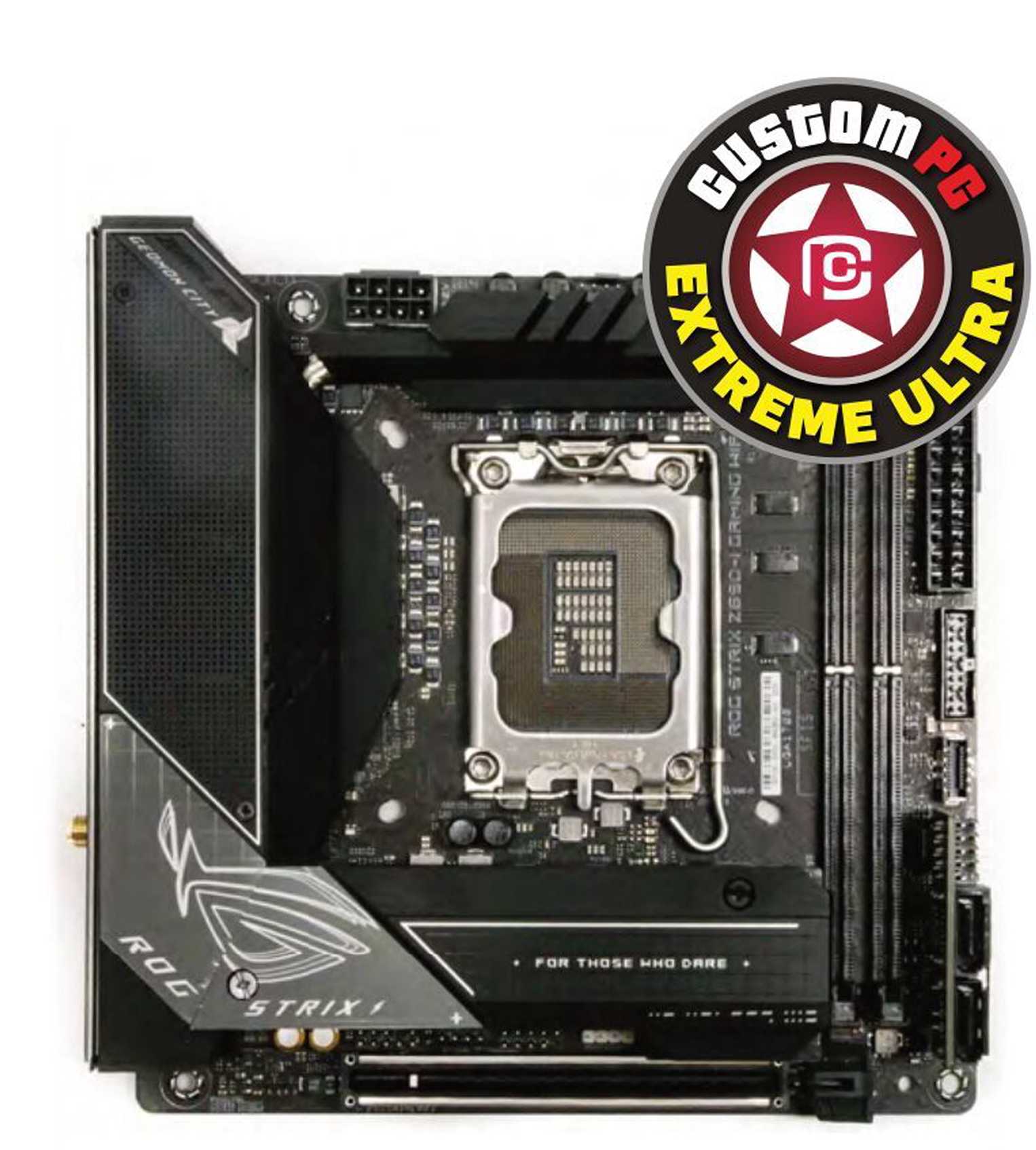
Our initial review of the Asus ROG Strix Z690-I Gaming WiFi was glowing, as it sported a mighty feature set and an imposing PCB crammed with even more goodies than previous generations. However, it still won’t leave you with much change from £ so can it still justify that price in the face of cheaper competition?
Its triple-stacked array of M.2 ports and audio circuitry is built into a heatsink system that passively cools both of its PCI-E 4 M.2 ports, with our PCI-E 4 SSD maxing out at 54”C, and this idea has been copied to some extent by Gigabyte with its Z690I Aorus Ultra Plus. The Gigabyte board trumps the Asus in a couple areas too, with more fan headers and on-board RGB lighting, plus both boards offer USB 3.2 Gen 2 Type-C ports and headers. Read our ASUS ROG STRIX Z690-I GAMING WIFI Review.
INTEL Z690 MOTHERBOARD
The Asus board is the only one to offerfull Thunderbolt 4 support, though, and with a pair of ports on the back too. This does push up the price tag, but it enables you to add Thunderbolt devices such as hubs and 10 Gigabit network controllers.
Meanwhile, the 11-phase power circuitry is cooled by a large fan-assisted I/O shroud heatsink, along with a second heatsink at the top linked by a heatpipe. With a VRM temperature of 51″C after dealing with our Core i7-12700K at full load for ten minutes, it was the coolest Intel board on test, so it will have no issues dealing with a Core i9-12900K either.
Move around the back and, you’ll find a rear I/O panel with a reasonable count of seven Type-A USB ports, two of which are USB 3.2 Gen 2. There’s also a clear-CMOS button, 2.5 Gigabit Ethernet port and aerial mounts for the 802.11ax Wi-Fi. Audio is provided by Asus’ Supreme FX 7.1 system which is based on Realtek’s ALC4080 codec, and the board’s three minijacks cater for line-out, microphone and line-in functions.
You may have spotted a vertical PCB in the photo too. This is where Asus has located the four SATA 6Gbps ports, along with RGB headers and even the front panel connectors. If you want to remove it, there’s a second power button header on the PCB. Sadly, though, the extra paraphernalia has resulted in Asus ditching the thermal probe header, which was useful for controlling fan speeds according to coolant temperature in custom water-cooling loops.
The Realtek ALC4080-based audio performed excellently, with a dynamic range of 118dBA and noise level of -118dBA, alleviating your inability to add a discrete PCI-E sound card. Its audio was better than the Gigabyte Z690I Aorus Ultra Plus too, and the Asus topped all of the Intel benchmark charts apart from Cinebench, albeit by small margins.
Adding coolers to the board can prove a challenge, though, as the CPU socket is cramped. This meant out ARCTIC Freezer Liquid II cooler was unable to fit, and using NZXT’s hefty Kraken Z53 required us to use low-profile memory too. However, smaller cooler blocks from Corsair and EK fitted fine.
Conclusion
It might be pricey, but if money is no object and you must have the best Z690 mini-ITX board you can buy, the Asus ROG Strix Z690-I Gaming WiFi ticks nearly every box ,and its added premium features ultimately justify its high price.
VERDICT
When you purchase through links on our site, I may earn an affiliate commission. Here’s how it works.
SPEC
Chipset AMD X570
CPU socket AMD Socket AM4
Memory support 2 slots: max 64GB DDR4 (up to 4400MHz)
Expansion slots One 16x PCI-E4
Sound 8-channel Realtek ALC1220-VB
Networking 1 x Intel Gigabit LAN, Intel 802.11ac Wi-Fi
Cooling Two 4-pin fan headers, VRM heatsink, M.2 fan
Ports 4 x SATA 6Gbps, 2 x M.2 PCI-E 4,1 x USB 3.2 Gen 2 Type-A, 1 x USB 3.2 Gen 2 Type-C, 4 x USB
3,2 x HDMI, 1 x DisplayPort, 2 x surround audio out
Dimensions (mm) 170 x 170







